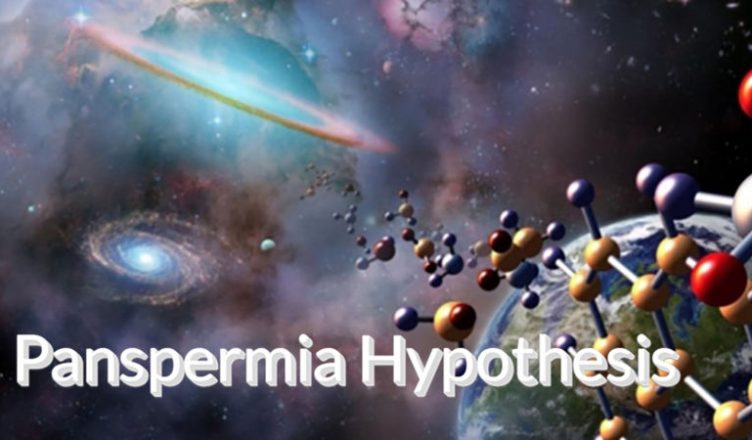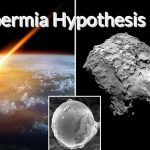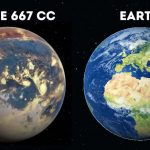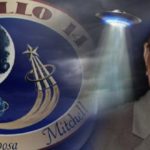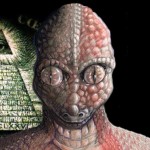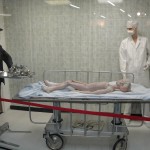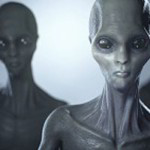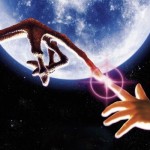Not long ago, the journal “Progress in Biophysics and Molecular Biology” published a rather eye-catching research article. The article, authored by 33 researchers from various renowned universities and research institutions, makes an astonishing claim that could significantly impact our current understanding of the universe. The claim is that “life did not originate on Earth.”
They particularly cited the example of octopuses, given their evolved complex nervous systems, intricate eyes, and self-camouflaging abilities, all of which seem incongruent with the historical context. The authors suggest that the genes necessary for the evolution of octopuses were not inherited from their ancestors, leading to a strong suspicion that the octopus and other similar creatures might be “extraterrestrial” in origin.
The Evolution of the octopus raises controversy over the origin of life on Earth:
Traditionally, the theory of abiogenesis has been the orthodox view of species’ origin. This theory posits that in the early days of Earth, certain conditions were conducive to the spontaneous synthesis of complex organic compounds, giving rise to the emergence of primitive life forms.
While we have some understanding of this process, we have remained unclear about how information was encoded into nucleic acids (DNA and RNA) to create the genetic inheritance and expression systems and how this transformed into life itself. Another puzzling aspect is that the processes described by the theory of abiogenesis seem to have occurred in a fleeting moment. The theory suggests that the “primordial soup” from which self-replicating RNA originated formed within the first 800 million years after Earth’s crust stabilized, a timeframe that many researchers find too narrow.
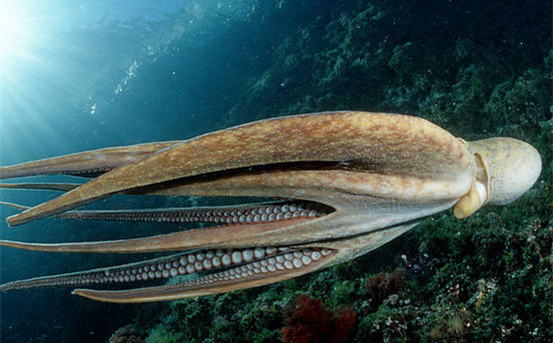
Despite its shortcomings and limited details, abiogenesis has been universally considered the only plausible hypothesis for the origin of life.
However, in this article, two of the 33 authors, Edward Steele and Chandra Wickramasinghe, reintroduce the concept of “panspermia” and criticize almost every aspect of abiogenesis theory. Steele, an immunologist from Australia, has been a long-time proponent of “acquired inheritance” theory, a notion that was first proposed by the French biologist Lamarck even before Darwin’s time. While Lamarck was influential, many scientists had already dismissed his views. It was in 1979 when Steele suddenly switched to supporting a modernized version of Lamarckian ideas known as the “somatic selection hypothesis,” and he published on it that year. The subsequent emergence of epigenetics and the discovery of horizontal gene transfer (HGT) in many microorganisms have contributed to rehabilitating Lamarck’s reputation, with many biologists referring to HGT as a “Lamarckian form of inheritance.”
Chandra Wickramasinghe, on the other hand, is a renowned astronomer and astrobiologist who holds multiple professorial positions in universities in the UK and Sri Lanka and has published over 70 articles in “Nature.” Wickramasinghe and his long-time collaborator, the late Fred Hoyle, proposed the hypothesis that “interstellar dust contains organic molecules,” one of Wickramasinghe’s most notable achievements. Subsequently, he conducted experiments to support this hypothesis and became a staunch advocate of panspermia, publishing numerous papers on the subject.
Hoyle, who was Wickramasinghe’s doctoral advisor, was himself a genius who formulated the concept of stellar nucleosynthesis, now developed into a well-established theory stating that all elements heavier than helium are produced by fusion reactions in the cores of stars. He also controversially argued that the famous “Piltdown bird,” a transitional fossil between dinosaurs and birds, was a fabricated hoax.
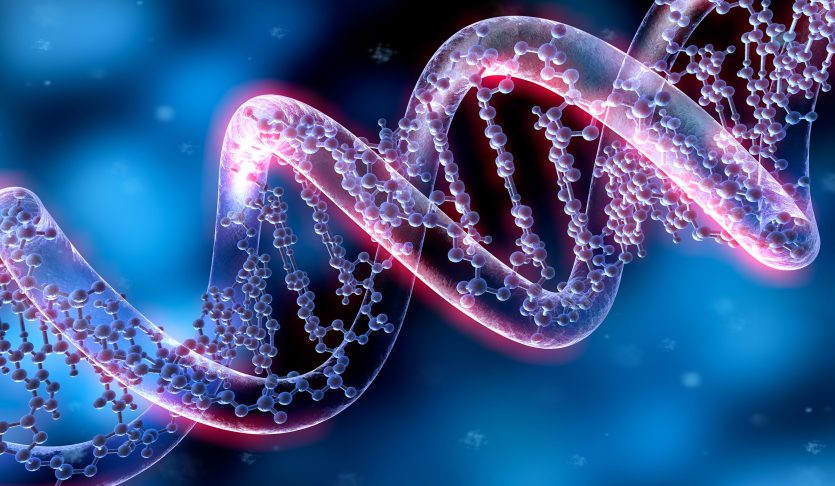
Hoyle and Wickramasinghe proposed a panspermia model in their research, which in their new article states that it “reviews key experiments and observational data over the past 60 years” and that the results “align with the Hoyle-Wickramasinghe (H-W) proposition of cometary (cosmic) biology.”
According to the H-W model, the authors suggest that Earth’s species were seeded by life-carrying comets, which began to take root when the Earth’s environment became conducive for life, about 4.1 billion years ago or earlier. Life forms that could withstand the conditions of space, such as bacteria, viruses, more complex eukaryotic cells or organisms, even fertilized eggs and plant seeds, might have continuously been transported to Earth in the process of our biological evolution.
In other words, researchers believe that there might not have been a “abiogenesis” process on Earth, and the primary source of genetic novelty may not be favorable mutations left by natural selection but rather a “new Lamarckian” mechanism like horizontal gene transfer, facilitated by life materials from outer space, integrating themselves into the Earth’s species’ genomes.
Furthermore, the H-W model speculates that many common diseases could be caused by spaceborne viruses, and the famous Cambrian explosion of life may have been the result of extraterrestrial retrovirus activity.
Keith Baverstock, a critic and evolutionary biologist from the University of Eastern Finland, writes that the evidence “supports the extraterrestrial origin of life,” but he also states in the same journal issue that “this evidence cannot be explained by any other.” In other words, the arguments presented by Steele and his colleagues seem plausible but lack compelling evidence.
Nevertheless, this article has withstood a year of rigorous peer review. Steele points out, “This study has been subjected to all manner of hard-nosed testing.” Despite the distance between the pieces of evidence and the arguments based on them, the reading is quite challenging.
Just as researchers in the field of Alzheimer’s disease have discovered that the mainstream theory has been wrong for decades, perhaps it’s worth considering this peculiar hypothesis: maybe panspermia is actually correct?
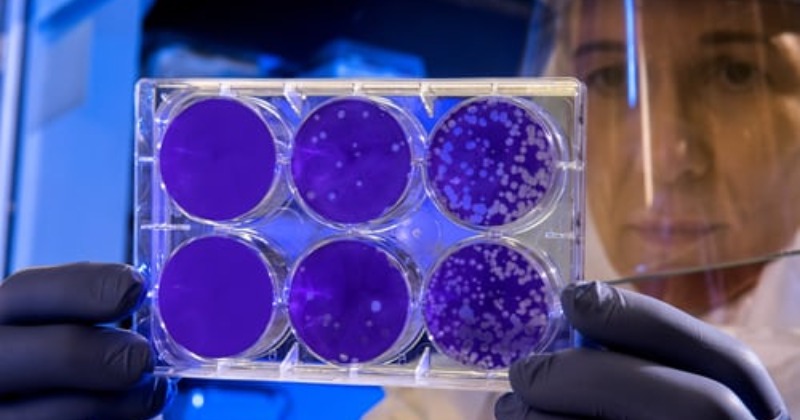
Is the spread of viruses a key driver of biological evolution?
First and foremost, the tone of this article is rather astonishing. Unlike typical research articles that use cautious language, this article is filled with a sense of triumph. “A series of new data is consistent with panspermia,” Wickramasinghe says, “and the rapid technological advancements and unexpected technological developments over the past four decades give us confidence to use this argument.”
The existing evidence is detailed and compelling, giving them enough confidence. The central theme of the article is the panspermia model, with a particular focus on the activity of viruses and retroviruses, and most of the evidence revolves around these points.
In our current understanding, retroviruses are incredibly impressive. They were pioneers in horizontal gene transfer, able to integrate their genetic material into the host genome to produce more viruses.
Interestingly, if retroviruses infect germ cells, such as sperm or egg cells, the integrated retroviruses (also called proviruses) are passed on to offspring. In other words, the genetic material acquired from retroviruses becomes a part of the offspring. This represents a stable Lamarckian mechanism, which Steele’s somatic selection hypothesis is based on.
The ability of retroviruses to influence the genetic makeup of the host genome makes us view viruses as a potent force. A research team led by microbiologist Matthew B. Sullivan in 2016 stated, “Viruses can modulate the function and evolution of organisms, but the extent to which they do so remains a mystery.”
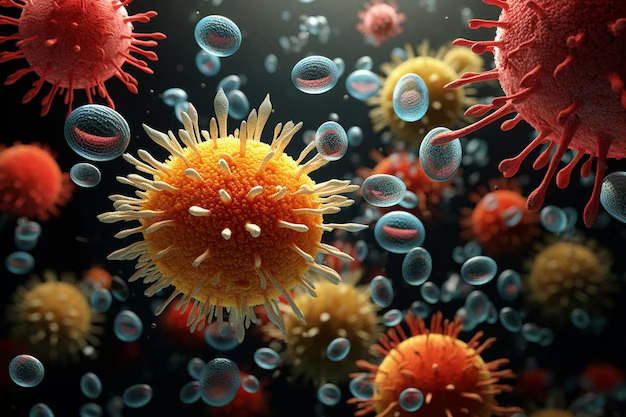
Furthermore, the sheer quantity of viruses around us is staggering. Virologist Curtis Suttle from the University of British Columbia in Canada and his colleagues published a paper last year, for the first time studying the number of viruses in the atmosphere. The figures are astounding, with billions of viruses per square meter on average every day. Viruses are indeed a powerful and ubiquitous force.
Steele and his colleagues seem to have been inspired by the latest virology data to link viruses with evolution.
In 2017, researchers Pakorn Aiewsakun and Aris Katzourakis from the University of Oxford published a paper in “Nature Communications,” concluding that “retroviruses co-occurred with vertebrate hosts in the oceans at least 460 million years ago.” They believed that these two forms of life exhibited a co-speciation pattern: as hosts evolved into new species, the corresponding viruses also underwent similar changes. According to Steele and his colleagues, this is a key prediction of the H-W panspermia hypothesis.
Steele and his colleagues draw two conclusions from Aiewsakun and Katzourakis’s findings.
First, viruses are “winners” because they utilize the mechanisms of host cells to regulate genetic composition and evolve. In other words, they “fully engage with the cellular growth, division, and reproduction capabilities to evolve themselves.” The example of “retroviruses co-occurring with vertebrate hosts” is not as straightforward, as they cautiously adapt to the host architecture and reach stability. However, the theory of mutual variation is theoretically unlikely to occur.
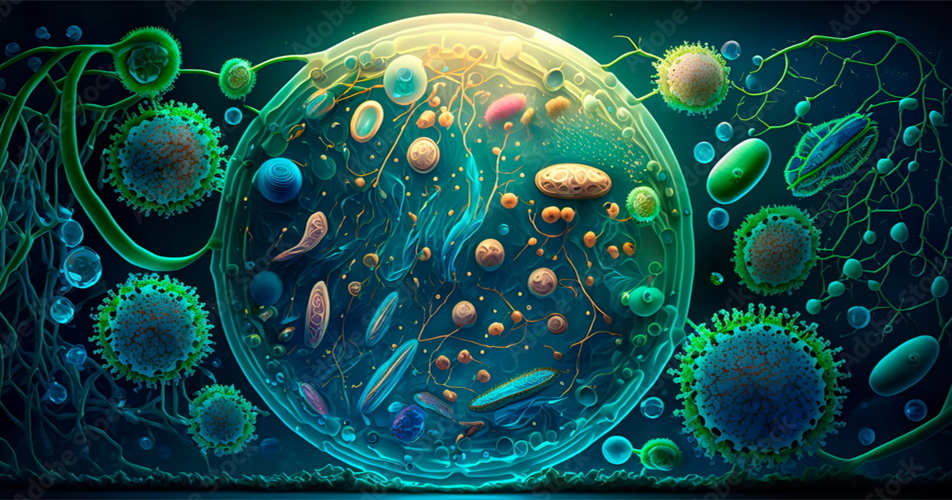
Second, shortly after the end of the Ediacaran period approximately 542 million years ago, there was a rapid diversification and complexity of species during the Cambrian explosion, which lasted less than 10 million years. This is a relatively short time frame in geological terms, but it resulted in an astonishing diversification and complexity of life. Scientists estimate that the rate of biological evolution was up to five times greater than it is today.
The authors suggest that panspermia can explain this: the extinction event at the end of the Ediacaran period was likely caused by comets carrying retroviruses, and these retroviruses were the “driving force” behind the Cambrian explosion. They integrated themselves into the genomes of a vast number of Earth’s species, introducing new genetic material, leading to an explosive event of biological diversification.
Their integration is easy and rapid, as it does not take much time for them to evolve to fit the host’s genetic architecture because these retroviruses are born for this purpose. Researchers write that this is because the H-W panspermia hypothesis is based on astrobiology, where “the entire galaxy (or perhaps local galactic cluster) comprises a connected biosphere,” and all life, whether on Earth or from extraterrestrial sources, is interconnected. Therefore, all life in the “cosmic biosphere” shares a “cosmic gene pool,” and all life’s biochemical compositions are fundamentally similar, despite differences in isotopes of basic elements in different parts of the cosmos.
Wickramasinghe states, “We believe there are at least 100 million habitable planets just in our galaxy, so within this interconnected cosmic biosphere, coupled with the exchange of biological material, large-scale horizontal gene transfer is inevitable, carried by viruses, seeds, bacteria, and ‘complex genetic packages’.” He explains that one of the reasons for embracing panspermia is that “the likelihood of transitioning from non-life to life on Earth is vanishingly small.”
Creation Theory Disagreement: Lack of Critical Evidence for the Origin of Life on Earth
The idea of life naturally originating on Earth, a mere speck in the vast cosmos, within such a short span of time, is something that Wickramasinghe finds almost fantastical.
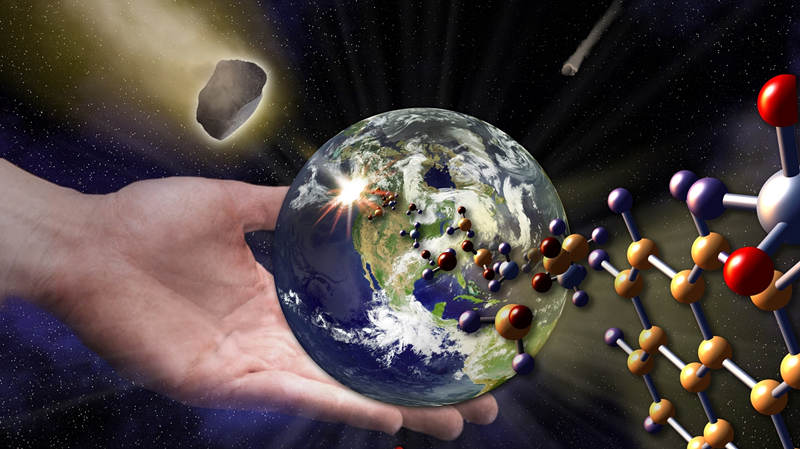
“The probability of life arising on Earth is exceedingly small; and life arising in the vast expanse of the universe is simply a binary choice. Given the two options, we choose the one with the higher likelihood,” says Wickramasinghe.
Steele and his colleagues argue that the probability of natural abiogenesis on Earth is extremely low compared to the probability of life emerging on countless comets or water-bearing planets during the early formation of the universe.
Nevertheless, Wickramasinghe, Hoyle, and Steele all believe that a “creation story” is unnecessary. When asked whether there must be life naturally arising somewhere in the universe, Steele responds, “In fact, there doesn’t have to be. If the universe is in a steady state, there won’t be real life! — I’m not saying I agree with this, but the Big Bang theory and the steady-state theory make it very hard for me to believe.”
For various reasons, the three scientists remain steadfast or intrigued by the steady-state theory.
This theory was jointly proposed by Hoyle and two other colleagues in 1948. The steady-state theory of the universe posits that the universe has no beginning or end and maintains a constant size. As outer matter in the universe loses energy and becomes dark, new matter is generated.
From this perspective, life, like the universe itself, is eternal and has no origin. As a famous losing battle, Hoyle lost to George Gamow’s model of the universe and to proponents of the Big Bang theory. Despite the discovery of cosmic microwave background radiation in 1964, as predicted by the Big Bang theory, Hoyle never abandoned his position, and the steady-state theory of the universe is an important basis for the H-W panspermia model.
This background theory and its features may be disconcerting, but they still use it as the basis for their arguments in the article because the article must have its own claims. Most of these theories have undergone peer review, but they are not always convincing. Nevertheless, the article remains thought-provoking.
For example, when asked why we haven’t found clear signs of microorganisms elsewhere in the solar system, Steele and Wickramasinghe are both convinced that we have indeed found signs. They both point to the work of Gilbert Levin, the principal investigator of the Viking mission to Mars, and his colleague Patricia Straat in 1976. The results of the Viking mission indicated the presence of some metabolic substance in Martian soil but failed to detect any organic materials. This result is intriguing but not conclusive.
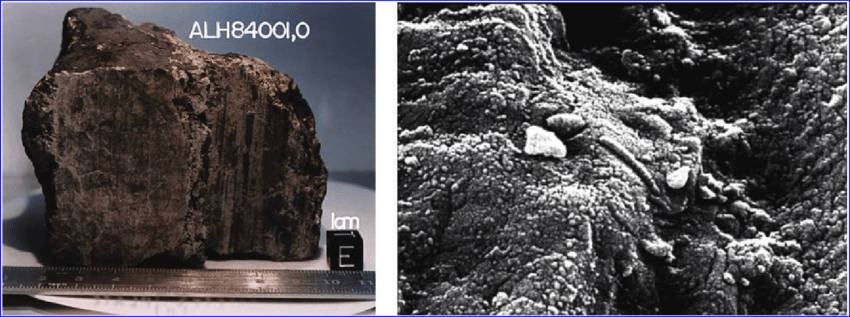
The authors also insist that many meteorites have been found with microbial fossils, including the famous Murchison meteorite that fell in Victoria, Australia, in 1969. Despite referencing various journal articles as support, we still cannot reach a definitive conclusion. In the end, the evidence is intriguing but lacks conclusiveness.
More recently, traces resembling carbon deposits of biological origin have been found on rocks from the heavy comet and asteroid bombardment period before the origin of life. The authors see this as evidence of life being delivered to Earth. However, Baverstock suggests that there may be other reasons for these carbon traces.
What’s more interesting is the discovery of bacteria and other microorganisms in places where life should not exist, such as the stratosphere 30-40 km above the Earth’s surface and even on the outer surface of the International Space Station. In the case of the space station, we can rule out human contamination, and physics suggests that microorganisms couldn’t have been launched from Earth.
These astronomical discoveries are particularly intriguing, such as the organic compounds detected on the 67P/Churyumov-Gerasimenko comet by the Rosetta mission. This discovery unexpectedly aligns with Hoyle and Wickramasinghe’s theory that “interstellar dust consists partly of organic molecules.”
Perhaps the most remarkable astronomical evidence is the discovery that led Steele to the panspermia hypothesis.
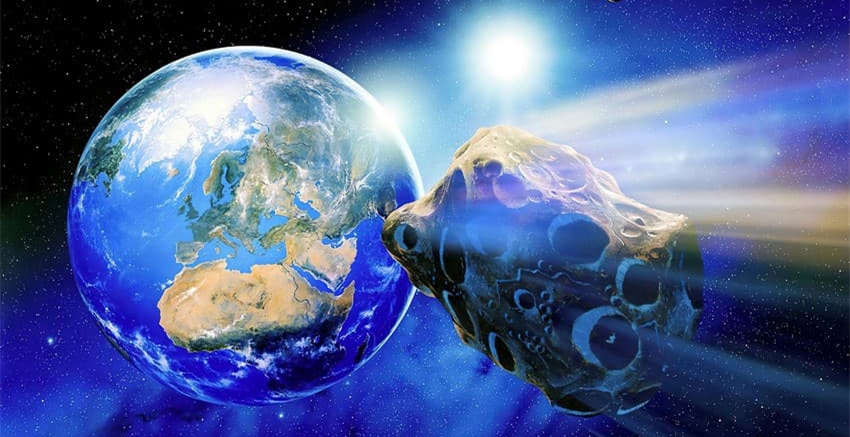
Recent studies on organic interstellar dust have shown that the spectrum of infrared radiation generated when it passes through cosmic dust is identical to the spectral features of freeze-dried Escherichia coli (E. coli) bacteria. The scientific community seemed unmoved by this significant discovery, and Steele was visibly disappointed.
He said, “Our existing understanding of the universe is built this way: acquire spectra (emission spectra, absorption spectra) in a ground laboratory and then point a telescope at some object in the sky to see if its spectrum matches the results from the ground laboratory. So, what happened? It’s a perfect match — you couldn’t ask for a better result from the scientific community.”
Why was this result strangely ignored? Steele reflects, saying, “Our current situation is like the past confrontation between Galileo and the Catholic priests — most people refuse to turn the telescope to the satellites of Jupiter.”
“life came from space” remains contentious
Now, let’s return to the octopuses, which may be the most controversial point in the newly published article.
Cephalopods are a group of animals that include squids, octopuses, nautiluses, and cuttlefish. Their evolutionary tree is somewhat unclear, with their origins dating back to the Cambrian period, apparently evolving from primitive mollusks.
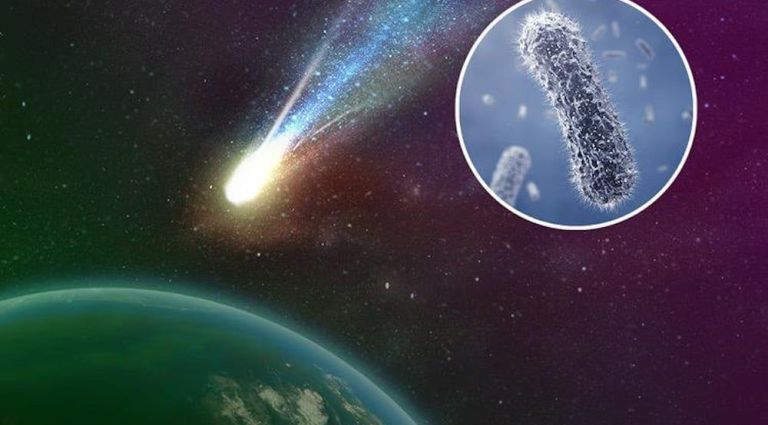
The evolution of octopuses is particularly striking because they possess a complex nervous system, sophisticated eyes, and the ability for sophisticated camouflage, all of which appear to have developed too rapidly in the context of their evolutionary timeline. The authors argue that the genes necessary for these octopus adaptations did not exist in their ancestral species, leading them to reasonably conclude that “the octopus is, to put it mildly, a big problem.”
In fact, octopuses do exhibit substantial and extensive biochemical differences from their closest relatives, particularly notable in the RNA structures of cephalopod nervous systems and protein variations. These changes in octopuses are evolutionarily conservative, and such high-quality evolutionary processes have not been seen in other species, even among cephalopods.
This suggests that a process outside of conventional Neo-Darwinian or even Lamarckian processes might be at play. This is where things get strange. “We believe that a possible explanation is that new genes are imported into Earth from space — this is the most plausible explanation, and we have discovered many new functional genes in octopus eggs preserved in a frozen culture medium,” the authors wrote. “This provides a conservative explanation for the sudden emergence of octopuses 270 million years ago.”
A prominent virologist from the Max Planck Institute Molecular Genetics in Berlin and the Institute of Medical Microbiology in Zurich, Karin Moelling, published a concurrent authoritative response to this article in the same journal’s commentary column. She said, “This article is useful and has attracted attention, and it is indeed worthy of consideration. However, the claims about extraterrestrial viruses, microorganisms, or even animals in the article should not be taken seriously.”
This statement momentarily silenced the media, except for occasional references to the extraterrestrial octopus. The scientific community was left perplexed by the exaggerated and bizarre conclusions and the results of peer review, becoming like the proverbial “silent sparrows.”
Perhaps it’s wise to heed the advice of the renowned British biologist and journal editor, Denis Noble. “The common academic cliché ‘further research is needed,’ which often appears in scholarly papers, is more applicable to this article,” he wrote. “In the future, this theory may be substantiated through experimentation.”
The authors of the article also agree with Noble’s viewpoint, summarizing, “Essentially, the question can only be resolved when extraterrestrial life is found elsewhere in our solar system.”
Instead of outright dismissing panspermia, we may need to patiently await the discoveries that future interstellar exploration might bring. Only evidence will ultimately settle the matter.
END:
In conclusion, the concept of panspermia, the idea that life may have originated beyond our planet and then journeyed through space to Earth, has sparked both intrigue and skepticism in the scientific community. The theory challenges traditional notions of life’s origins and evolution, suggesting that our understanding of these processes may be far more complex and interconnected with the cosmos than previously imagined.
As we venture into the future of space exploration, the search for extraterrestrial life will be a central focus. By investigating celestial bodies within our solar system and even further into the cosmos, we may find the evidence that either bolsters or refutes the panspermia hypothesis. The detection of life beyond Earth would be a momentous discovery, shedding light on our place in the universe and reshaping our understanding of life’s origin, evolution, and potential ubiquity.
While the panspermia hypothesis currently remains a subject of debate, it serves as a reminder that the mysteries of the cosmos are far from being fully unraveled. In the pursuit of knowledge, scientists will continue to explore the possibilities, conducting further research and experiments to answer the age-old question: Are we alone in the universe? The future holds the promise of exciting revelations and a deeper understanding of our place in the grand tapestry of the cosmos.
More UFOs and mysterious files, please check out our YouTube channel: MysFiles
Lacerta Files: Human beings are the product of genetic engineering by alien civilizations.
